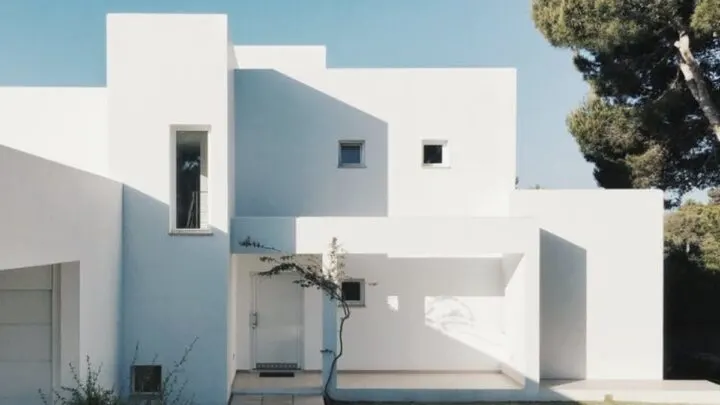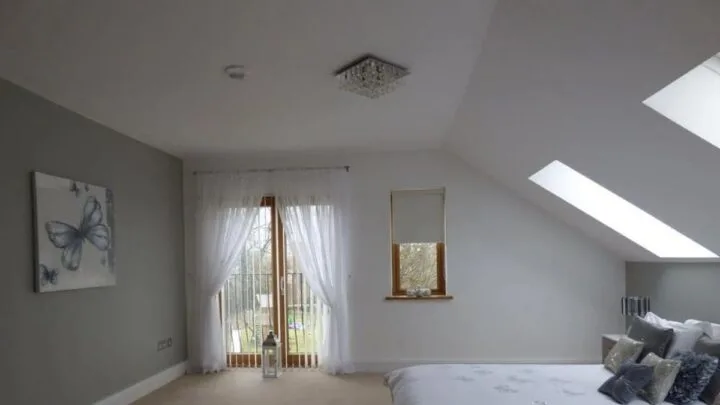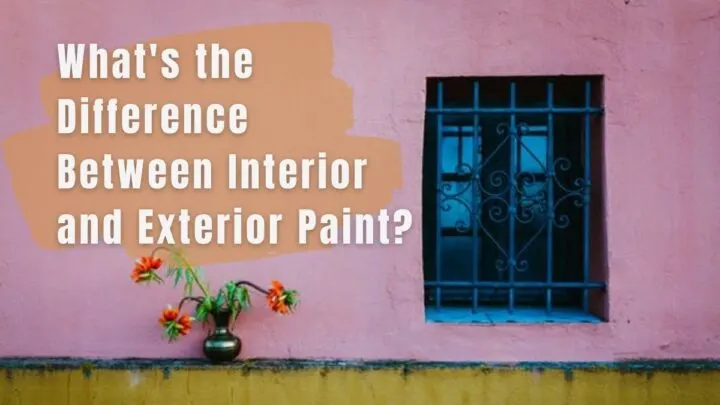Are you planning to redecorate your home or paint it from scratch?
Many people get confused trying to figure out the difference between interior and exterior paint. In reality, both paints serve very different purposes for the home.
Exterior paint can protect your home against harsh weather, along with cracking, mold, mildew, and fading. On the other hand, interior coatings are formulated to keep the surfaces from staining easily and can be cleaned.
Before you go on to pick the paint to embellish your home, it’s good to know their characteristics and what they are used for.
Key Difference Between Exterior and Interior Paint
The primary purpose of paint is to provide coatings on any surface. The layers offer a wide range of colorful finishes and enhance the aesthetics of any surface.
“Exterior paint has different properties and materials, and the fumes may not be safe for interior use. Interior paint does not have the properties to hold up in exterior temp and sun, etc.,” explained Rex on Quora.
Let us discuss the variability that separates one paint from another and gives them their unique characteristics.
1. Resins
Resins in paint allow it to have its binding property to help the paint bond with any surface. Resins are typically formulated with epoxy, silicone, or acrylic.
For exterior use, acrylic binding resins are more durable, but they give off a strong smell. This is why indoor paints mainly include silicone or epoxy.
2. Solvents
Basically, paint is wet because of the solvents in it. Both the paints can share similar formulas like oil-based or water-based solvents. For exteriors, DIYers or pro painters can apply water or oil-based paints.
For indoor coatings, it is advised that you paint with a water-based solution.
3. Pigments
Home paints use pigments, which help to generate the desired color cast. Interior paint manufacturers use organic-colored materials to counter strong odors.
On the contrary, exterior lacquers need effective coloring to keep away harsh weather conditions; therefore, they use non-organic pigments.
4. Additives
Additives allow the paint to adhere to varying conditions. For interior paint, manufacturers don’t put in any additives because they will not go through adverse weather.
On the other hand, exterior paints have additives, helping to deal with changing temperature, debris, cracking, etc. A common additive for exterior paint is mildewcides, which help keep molds and mildews at bay.
5. Adhesion
Exterior paint is made to last for ages and tackle the harshest conditions; thus, they have a tremendous adhesive effect in order to stay on the surface they’re put on.
Interior paints also have decent attaching functionality, but might fade and come off in time.
6. Drying Time
The thicker the paint, the longer it takes to dry out. For example, oil-based paints will need a longer drying time than water-based paint.
It also depends on where you are putting it, whether it’s on the outside or inside the home.
As you already know, oil paints are primarily used outdoors; thus, they will be accompanied by sun and wind, allowing them to dry quicker than in places with restricted air circulation.

Withstanding Capability
These paints can hold the ground for a decent amount of time without being damaged. In general, exterior colors have better chances to fight against potential damage and last in varying environments. Let’s check out some of their functionality.
Weather Resistance
Interior paints are made to last indoors, and therefore they have less water-resistant capability and weather resistance.
When it comes to exterior colors, they are created to handle fluctuating weather and won’t budge anytime soon if exposed to sunlight, wind, or snow.
Dealing with Temperatures
Exterior colors are on the outside surface of your house and will be exposed to a wide array of temperatures, from low to high.
Such paints can tackle extreme heat to chilly, snowy conditions. In contrast, interior paints are only suitable for basic home temperatures such as 50-90 degrees Fahrenheit.
Emission Harmful Gasses
Many paints have VOC (volatile organic chemicals) to help withstand different problems. Having such chemicals makes them smelly and harmful to humans.
You will find VOC on exterior paints, and these are prone to fading into the open air as time goes by.
Interior paints are made with less amount or no VOCs at all. They have fewer additives and chemicals, so there is no chance of outgassing the environment.
Moisture and Mildew Prevention
Exposed to the open air, exterior paints will be bombarded with rain, storms, and other hazards; thus, they are made to last and handle water without deteriorating.
Interior colors are only washed occasionally for cleaning purposes; therefore, they don’t need to withstand moisture like exterior paint.
Mildews, molds, and algae are known to form outside your home no matter how protected you are. Exterior paints are made mainly with mildewcides to counter these occurrences.
They are strong in smell but will keep your house shielded.
Resistant to Physical Damage
If you are talking about scuffing or scratches, exterior paints will surpass the interior paint. Made with a supreme resin bond, it will adhere to the surface better than any other paint; thus, it is hard to chip off.
On the other hand, interior paints will flake off if it takes a direct hit and extra pressure.
Durability
Any paint you apply must be durable; otherwise, it will flake off, and you might have to redo it sooner than later. Exterior paints have extreme durability.
They will stick to the outer surface of your home even during weather changes, hit by flying debris, etc.
Indoor paints are also durable but not like exterior paints. Such paints can hold off scrubbings from the cleaning process but won’t tolerate excessive force.

The Use of Interior Paint and Its Characteristics
This type of paint is used to add colors to any indoor surface. They are not as durable as exterior paints but good enough to tackle cleaning and washing needs. Also, they don’t have harmful VOCs.
Interior paint is just made to decorate your interior and offer some protection, meaning it’s not waterproof and won’t last in varying weather hazards like exterior paints.
Characteristics
- Used to decorate and add aesthetics to the indoors
- Interior paints can withstand staining and be scrubbed or wiped to clean the surface
- It doesn’t need sunlight to dry out. Made chiefly of water-based solutions, they dry faster indoors and won’t require open spaces or excessive air circulation
- Does not have harmful chemicals or VOCs like exterior paints. It is well formulated to stay indoors and cause no harm to humans
Use of Exterior Paint and Its Characteristics
It is developed in a way so that it can cover the outer surface of your home. Such paints contain strong bond resins to ensure proper attachment with the surface. They are very durable and will last for ages without chipping off.
These paints have additives in them, making them weatherproof.
Characteristics
- Exterior paints are made to protect the surface against sunlight, moisture, rain, snow, mildews, and molds
- Unlike interior paints, exterior colors won’t fade quickly if exposed to sunlight
- There are mildewcides in exterior paints, making them capable of keeping molds and mildews at bay
- They have flexible resin bonds, making them more durable and long-lasting even in varying conditions. These paints can also shield the coating from cracking
- Exterior paints mostly use oil-based substances and will require sun rays to cure and settle properly. With VOCs and additives, they tend to be smelly and are harmful if used indoors
What Happens When One Paint Is Used Over the Other?
It is not advised to use exterior paint for indoor settings. The same goes for interior paint on exterior surfaces.
The first thing to remember is that exterior paint contains additives and VOCs, which are destined to outgas into the surrounding area over time. If put indoors, they will cause breathing issues and can hamper human health.
Similarly, it would help if you did not put interior paint on any outdoor surface.
There are some versatile or universal paints that can be used both inside and outside.
These paints won’t hold up as strong in either situation as purely interior or purely exterior paint would, but they’re still an option!
Conclusion at Interior and Exterior Paint
Before you start painting, it is wise that you know about products that are intended for applying to particular surfaces.
The most common dilemma is not knowing the difference between interior and exterior paint; thus, many people end up with finishes that degenerate quickly.
To extract the best finish, you must never apply interior paint on exterior walls and vice versa. Simply stick to the one it is advised for.


